
Over the years I've climbed in a lot of different places, but if there was one place outside the UK I could happily live and climb in for the rest of my life it would undoubtedly be Tasmania. In many ways there are a lot of parallels with climbing back at home, as there's a strong trad ethic, a rich climbing history, and endless opportunities for adventure. It is, much like us, an island with both coast and mountains, only their coast is more rugged and their mountains more remote. In short, Tasmania is a bit like paradise…
Adventures at the Edge of the World - The epic story of Tasmanian rock climbing from Simon Bischoff Photography on Vimeo.

Bearing in mind how difficult it is to put something of this magnitude together it speaks volumes that its creators, Gerry Narkowicz and Simon Bischoff, are two of the island's most passionate activists. Ever since the 1980s Gerry has put up a great many of the island's classics, developing new areas, and writing many of the island's guidebooks. Simon Bischoff is a more recent new route developer, but also an outstanding photographer (and is well worth following on Instagram). As a result, combining their superpowers here, we have a book that makes the likes of Hard Rock, Peak Rock and The White Cliff look like half arsed efforts, not least because it's fundamentally trying to cram an entire island's climbing history into a single volume!
Before we begin to say more about the book itself it's probably best to say a little more about rock climbing and the geology of Tasmania. I've already mentioned that much like here in the UK it has an exceptionally diverse offering, especially when you consider its small size, which is roughly the same as Ireland. The mountain ranges are both large, extensive and remote, with approach times often counted not in hours, but in days.
In these mountains there's a rich heritage of fantastic ridge lines and traverses, with Cradle Mountain and Mount Geryon being two of the most classic examples. The mighty quartzite titans of Federation Peak and Frenchman's Cap are truly astounding, offering a degree of exposure and commitment that it would be hard to find here in the UK. Looking a little lower in altitude, mountains such as the Tyndalls offer superb sport on conglomerate rock, exemplifying Tasmania's acceptance both of the trad ethic and the sport ethic, or even a hybrid of the two. It's a flexible system, but one that seems to work, with key areas being kept bolt-free to preserve the overriding spirit of traditionalism.
No article - or book - about Tasmania would be complete without mentioning its plentiful supply of dolerite. For those that have visited Fair Head, imagine that but a lot more of it both within the mountains and by the sea. Ben Lomond is one such area, with some of the best jamming pitches around. Jamming is a central part of the island's climbing style and it's often joked about that Tassie climbers are all weak, but good at stuffing their hands into cracks and are all very fit due to the long approaches, whereas climbers located in more populous climbing areas such as the Blue Mountains are just good at drinking coffee and giving it the big chat (and having sat in cafes around Blackheath, I'd be inclined to agree). Another dolerite cliff that is rightly held in high regard is the Organ Pipes, located just above Hobart. Being one of the more accessible cliffs, and benefiting from close access to the island's largest town, it is exceptionally popular, with both trad climbs and sport climbs living side by side.
When it comes to the sea cliffs it's hard to know where to begin because they're all so good, but it would be remiss to start anywhere other than the Tasman Peninsula because it is the location of Tasmania's best known rock feature: The Totem Pole. This world famous feature is a rare example of something that climbs as good as it looks, maybe even better; however, it is by no means the only objective in the area. Mount Brown offers adventure, the Paradiso good sport, and perhaps best - and most Tasmanian of all - the rockaneering ridge at Cape Raoul. The latter encapsulates a genre and discipline that can be found few other places, with the spirit of mountaineering distilled into a sea cliff adventure.
The difference between the island's east and west coast is dramatic due to the differing climatic pressures exerted on each. The Freycinet Peninsula on the east coast has a holiday feel about it, with its white sand beaches, clear blue seas and abundance of easily approachable rock climbs. The west is a somewhat different state of affairs, feeling much more wild and remote, very much like you're out there on the frontier.
If you add all of the above into a background of the most outstanding wildlife you've ever seen, you have yourself something of an island paradise. Wallabies, Pademelons, Wombats and the infamous Tasmanian Devil are but a few of the creatures you might see, but there are many more.
Now I've finished reminiscing about just how good the island is, here's the actual review:
The Introduction
Kim Carrigan was tasked with the writing the book's foreword, and who could be more appropriate given that he was without doubt Australia's first 'world class' export? Kim travelled around the world repeating hard route after hard route and made quite an impression whilst on his UK visit, not least for the fall he took off A Midsummer Night's Dream at Cloggy where he took a supposedly crag wide fall from the crux (gulp!).
Gerry's introduction sets the scene nicely by outlining why it is so important for a book of this nature to be published, something which is summarised neatly within his concluding statement:
This chimes with something that the late great Ken Wilson once said:
"once you've got a book out there, it's there forever - it's a statement in history...and it's pretty natural to go seeking after greater illumination of the world in which you lived, and trying to understand what crucial things constituted to it".
I'm not sure if Gerry and Ken ever met, but I have a feeling they'd have had shared values on a number of grounds, not least to keep Ben Lomond - one of the island's premier and pure trad venues - bolt free.
The Chronology
The book itself runs chronologically, starting in 1914 and working through to modern day a decade/chapter at a time. Within each of these chapters are stories written by individual activists, which gives each section a slightly different tone and perspective. This is a refreshing approach, because it means that the Tasmanian story isn't told by a single individual from 'up high' - it's told by the very people directly involved with it. These individuals include legends like John Ewbank, inventor of the Australian grading system and all-out legend of the Aussie climbing community. Were you to liken him to someone on our side of the globe it would be someone like Joe Brown, such is his influence. Greg Child, author of Postcards from the Ledge and another legend of Aussie climbing is another contributor, as is our very own Lancastrian ex-pat Paul Pritchard, but there are many, many more (some of whom we'll come to later).
Before the more detailed accounts begin there's a timeline which gives a good overview of key events. Once again, because there is so much they've stuck to a double page for each decade, which is understandably space intensive, but I think this book is unashamedly large and is proud of its size, because it just goes to show how much history there really is. Remove something, or strive to make it smaller, and you'd miss out on one of the tales that makes it what it is, which is a compendium of climbing knowledge - not something you'd wish to cheapen.
Each story is coupled with excellent imagery from both past and present, and it must have been quite an effort to compile because of this. Not only are there archive images from first ascents of yesteryear, but there are also more contemporary photographs from modern day ascents - both in terms of repetitions and new routes. It must have taken a remarkable effort to collect these, and the authors should be extremely proud of the end result.
The Stories
I've already run through an overview of the island's key crags, but thought I'd mention a few of my favourite stories from the book:
The Candlestick Circus, by Tim Christie - dubbed 'one of the most bizarre ascents in Australian climbing history' this story is indeed one of the most whacky you'll ever read and involves floating a hydrogen balloon across a 120m gap in order to access the inaccessible pinnacle.
The Totem Pole, by John Ewbank - whilst The Totem Pole is now known for its fantastic free climbing, this tells the tale of its first (aided) ascent and is by no means less exciting as a result.
Incipience, by Gerry Narkowicz - When Brits go abroad they tend to take a while to get their heads around other grading systems, mostly because ours is - as we all know - perfect. Incipience is the ultimate example of this, having a relatively innocuous sounding number (i.e. it should be easy), but in reality having fairly serious consequences (i.e. 30m falls have been taken off this route). I did it early one morning in an effort to avoid the sun, but arrived a little too late and took a little too long, reaching the start of the runout just as the rock was beginning to burn. That said, it doesn't matter what conditions you do the route in - it isn't one you're going to forget any time soon…
The Totem Pole, by Paul Pritchard - this chapter outlines the completion of the circle, when Paul returns to the Tote 18 years after his infamous accident.
Back to the Future, Climbing in the 90's, by Gerry Narkowicz - worth reading through for the images alone, as the FAs throughout this era are utterly mindblowing.
It's worth noting that this is just a tiny fraction of the stories from the book, it's just a highly select list of ones that particularly resonated - there's a lot lot more! Another thing to consider is that some of the stories are about more than just climbing, they're about the philosophy of why we climb.
The Crags
As if all of the above didn't give you enough background on the individual areas then there's a whole lot more alongside it. Much like the characters, several of the individual crags also get a specific overview within the book's eighth chapter. These include The Organ Pipes, Ben Lomond, Africa (an area to the south of Ben Lomond, not the continent…), the Freycinet, Cataract Gorge, and perhaps my favourite of all - Flinders Island (mostly because it looks amazing and I never made it there). There's also a brief history of bouldering throughout the island, which - at least to date - has never been the main focus of attention (but potential abounds). Finally there is a short piece on indoor climbing, which is nice because this is ultimately how many of the next generation of Tasmanian rock wads are going to get into the sport.
The Characters
Throughout the book, as well as its ninth chapter, there are portraits and interviews of key individuals in Tasmanian climbing history. Once again, there are too many to name, but here are a few of my favourites:
Gerry Narkowicz, by Nick Hancock - I was sad to have missed out on meeting Gerry back when I visited Tasmania, so it was nice to finally put name to face when he came over to the UK. Gerry is undeniably one of climbing's characters, and this is a chapter that does that character justice.
Bob McMahon, by Bruce Cameron - Bob McMahon was one of, if not the greatest, Tasmanian pioneer of all time and sadly passed away in 2013. His legacy lives on through his routes and arguably this book, which Gerry very much dedicates to Bob's mentorship.
Henry Barber Interview - there was a time when 'Hot' Henry went gallivanting across the globe, from country to country, showing them all how it was done (us included). Australia was no exception and a great many of the country's classics were put up by this seemingly unstoppable force.
Nick Hancock Interview - I'm potentially a bit biased about this one, as Nick is a British ex-pat originally from Plymouth. I've climbed a few of Nick's routes in the South West and a load of his routes in Tasmania and the quality of all of them has been sky high. His arrival took the island by storm, where he set about developing the island's great many virgin cliffs.
Summary
If you're from Tasmania, have ever been there, or are interested in climbing history/philosophy then this is a book I would highly recommend. Not only does it give you an insight into the island's rich climbing history (and its characters), but it has enough psyche inducing photographs to keep you entertained throughout even the darkest of winter nights. My only criticism is one of geography - I only wish I lived closer!

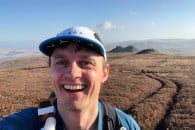























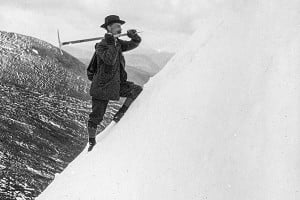






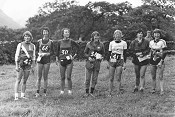

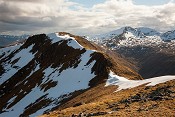

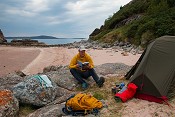
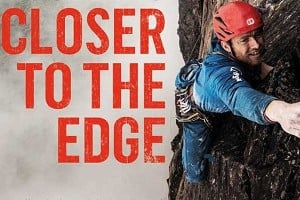


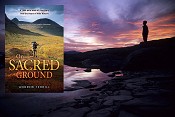
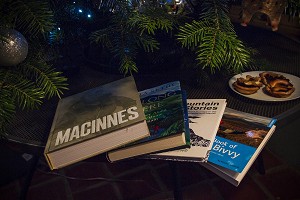
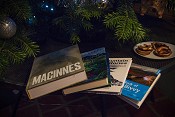

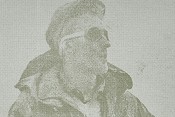
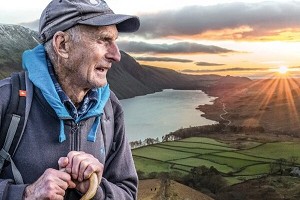

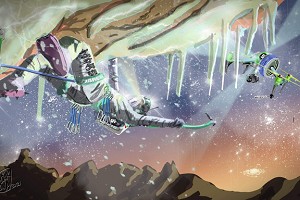

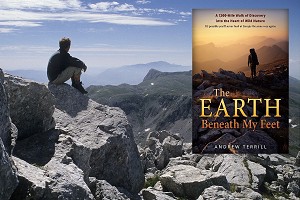
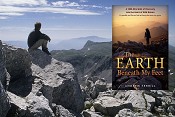
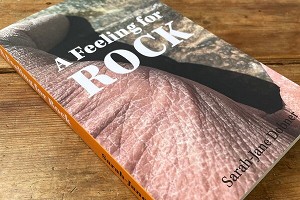
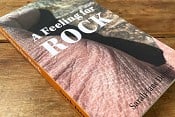
Comments
This part of the world keeps popping up but I doubt we're at a grade where we could fully enjoy such a place. With all the time on our hands I caught a Tasmanian climbing/base jumping film called the Lorax project that might be of interest to anyone reading this article.
https://vimeo.com/310331133
Great write up on this book, thanks.
Agree. Superb review of what sounds like a wild place (with even wilder characters!)
Mick
I very much doubt I'll ever get there to climb but this book is most definitely on my tick list.
I spent a few months tramping in the Tassie bush on a couple of visits years ago. A lot of the locations I got to are mentioned in the article and I can vouch for the big walks to get in! Frenchman's Cap is a long way with a very muddy section early on (the sodden Loddens). It's a great peak with a huge quartzite face. The well known Overland Trail passes through stunning remote country with acres of crags all around. Some of the huts would make good bases for climbing. I well remember going on a side trip up Mt Oakleigh which had some huge pinnacles on the side. A couple of downers not mentioned are leeches in the bush and mossies on the beach - those b* stards can bite through tracksters! The fantastic blue sea at Freycinet is also bloody freezing.
The most amazing place I have ever climbed; yes I am biased my dad was Tasmanian. A really cool place just to be, never mind the climbing.